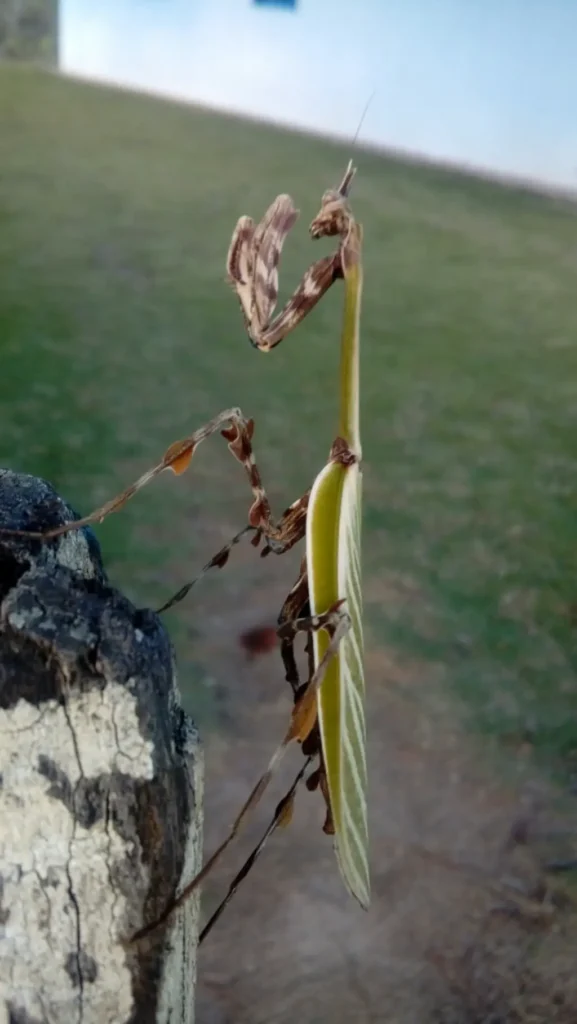A Jewel of Nature
The Zoolea strigata is a species of praying mantis renowned for its beauty and its ability to camouflage itself in floral environments. Native to certain regions of Asia, this mantis is a fascinating example of mimicry in the animal kingdom.
Physical Characteristics
- Size: Compared to other mantises, the Zoolea strigata is of moderate size. Females are usually slightly larger than males.
- Coloration: Its coloration is variable and can range from shades of green and brown to white and pink. This color variability allows them to adapt to different types of flowers.
- Legs: Its front legs are specially adapted for capturing prey, and their colors and patterns often mimic flower petals.
| Characteristic | Description |
|---|---|
| Size | Moderate, females slightly larger |
| Coloration | Variable: green, brown, white, pink |
| Legs | Adapted for capturing prey, mimic flower petals |
Habitat and Behavior

- Habitat: These mantises are usually found in tropical and subtropical forests, where they inhabit flowering plants.
- Behavior: They are ambush predators, patiently waiting for their prey to approach the flowers they mimic. Their diet consists mainly of small insects such as flies, mosquitoes, and butterflies.
Life Cycle
Like other mantises, the Zoolea strigata undergoes incomplete metamorphosis. Its life cycle includes the stages of egg, nymph, and adult. Females deposit their eggs in oothecae, which are protective capsules containing multiple eggs.
Captive Care
Breeding Zoolea strigata in captivity is possible but requires specific knowledge and care. It is important to provide them with a suitable terrarium with live plants and a varied diet.
Conservation
Due to habitat loss and capture for the pet trade, many mantis species, including the Zoolea strigata, face threats. It is essential to protect their natural habitats and regulate the trade of these insects.
Conclusion
The Zoolea strigata is a fascinating species that demonstrates the incredible diversity of the insect world. Its ability to mimic flowers is a perfect example of evolutionary adaptation.
Would you like to know more about the diet of the Zoolea strigata, its reproduction, or the differences between this species and other mantises?
Possible related questions:
- How can I identify a Zoolea strigata?
- What is the best way to care for a Zoolea strigata in captivity?
- What role does the Zoolea strigata play in its ecosystem?
- What are the main threats to the survival of the Zoolea strigata?
- Are there other mantis species with similar camouflage abilities?


